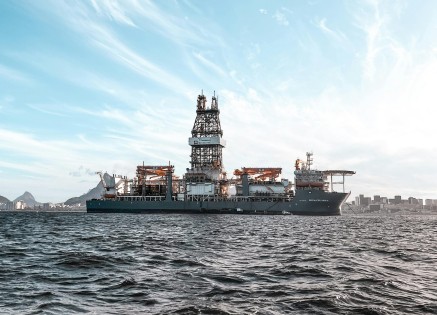Copyright © 2025 lmitac.com All Rights Reserved. Contact - Terms and Conditions - Privacy Policy - Quality Policy - Become an instructor - Vacancies - Sitemap
London Maritime Academy is a trade name for London Premier Groupversion: 2.9.0
London Maritime Academy is a trade name for London Premier Group

Posted on : 4/26/2025, 10:00:20 PM
Trump tariffs have been reshaping global trade since 2018, when President Donald Trump first imposed them. Now, in April 2025, the Trump administration has announced more sweeping tariff increases on imports from China and other countries. As they surfaced, Trump's new tariffs have had a massive impact on the global shipping market, affecting economies, businesses, and consumers worldwide.
Let's take a closer look at the new Trump tariffs and how President Donald Trump has completely changed economics in one genius move.
The reciprocal tariffs initially targeted Chinese goods, forcing companies to avoid these extra costs by shifting imports to other countries like Vietnam, India, Mexico, and Canada. Nevertheless, this change disrupted long-established trade routes, creating new flows of goods. If we look at the broader picture, we see these shifts reflect a broader economic adjustment in the wake of Trump's policies.
Shipping lines had to adjust fast, changing schedules and reallocating vessels. Manufacturing moved away from China, and new agreements with alternative suppliers had to be made. These changes brought additional costs and complexity to international logistics, as the shipping industry faced a new baseline.
Kevin Bessent, a leading financial chief, told Fox News that the Trump tariff deal was a blanket response to long-standing trade issues, and the impact on global supply chains was unavoidable.
With the tariffs came rising costs and unpredictable freight rates. Importers rushed to bring in goods before duties became effective, which caused short-term rate spikes. Once things stabilized, imports from China declined, but demand rose for shipping from other regions, pushing up costs.
Rates rose by as much as 25 percent over a few weeks, according to a report by MSNBC. The markets responded with uncertainty, and businesses had to reconsider pricing and supply chain strategies.
The Federal Reserve also noted in a podcast that tariffs contributed to a slower economy, with shipping costs becoming a pressure point. Chairman Powell warned that the monetary impact could affect economic growth, especially in exposed sectors like tech and manufacturing.

The April 2025 tariff package is among the most sweeping yet, covering tech, electronics, steel, and aluminum. The White House called it a national emergency to protect American families and jobs, but many see it as a risky move.
These new tariffs imposed additional costs on businesses, causing a surge in demand for routes outside China’s influence. This shift exposed weaknesses in logistics infrastructure, leading to slower delivery times and a need for updates in capacity planning.
In California’s ports, for instance, the authority reported congestion from the redirection of imports. As a result, dozens of shipping lines have paused services or adjusted rates.
As tariffs squeezed businesses, many shipping firms faced reduced revenue. Some companies have paused or avoided less profitable routes altogether. Others are now facing legal lawsuits over delays and service issues. Most importantly, many are reverting back to the basics and taking extra classes at a Maritime training academy UK.
A Supreme Court case regarding tariff authority and executive overreach is also pending, adding legal uncertainty. Amy Klobuchar, speaking on Tuesday, warns of the impact on smaller companies and families, calling for targeted exemptions.
Manufacturing hubs shifted from China, bringing delays and new planning hurdles. Businesses had to build new agreements with suppliers and adjust inventories to meet demand. This economic reshuffling led to slower supply chains and higher costs.
Canadian firms joined discussions on cooperative trade measures, aiming to stabilize the sector. However, with Trump’s tariffs still in place, uncertainty remains high.
Every tariff brings more paperwork. Importers must navigate de minimis thresholds, seek exemptions, and comply with customs. This blanket approach to policy created port delays and increased costs for companies and consumers.
Beyond logistics, Trump tariffs are affecting global economies. Taxes on imports, particularly tech, steel, and aluminum, led to price hikes, hurting growth and pushing inflation higher. Fed board members are monitoring the markets closely.
America’s PPI and PMI indices have shown strain, and the Eurozone’s sector has felt similar pressure. Trade deficits are shifting, but at what level of cost?
In talks with Xi Jinping, Trump insisted on strict reciprocal measures, but playing hardball has brought international criticism. Fox News and Times analysts discuss whether the potential gains outweigh the risks.
Longer routes now mean higher fuel use and emissions. The sector faces a challenge in balancing economic changes with sustainability and marine biotechnology. Live updates from shipping associations warn of missed climate goals due to extended trade routes.
Trump tariffs, from their announcement to the massive April 2025 update, have transformed the global shipping market. With rates rising, markets shifting, and businesses adapting under uncertainty, the impact is being felt from America to China, and beyond. The international trading landscape will continue evolving as federal policies impose new realities on a connected world.